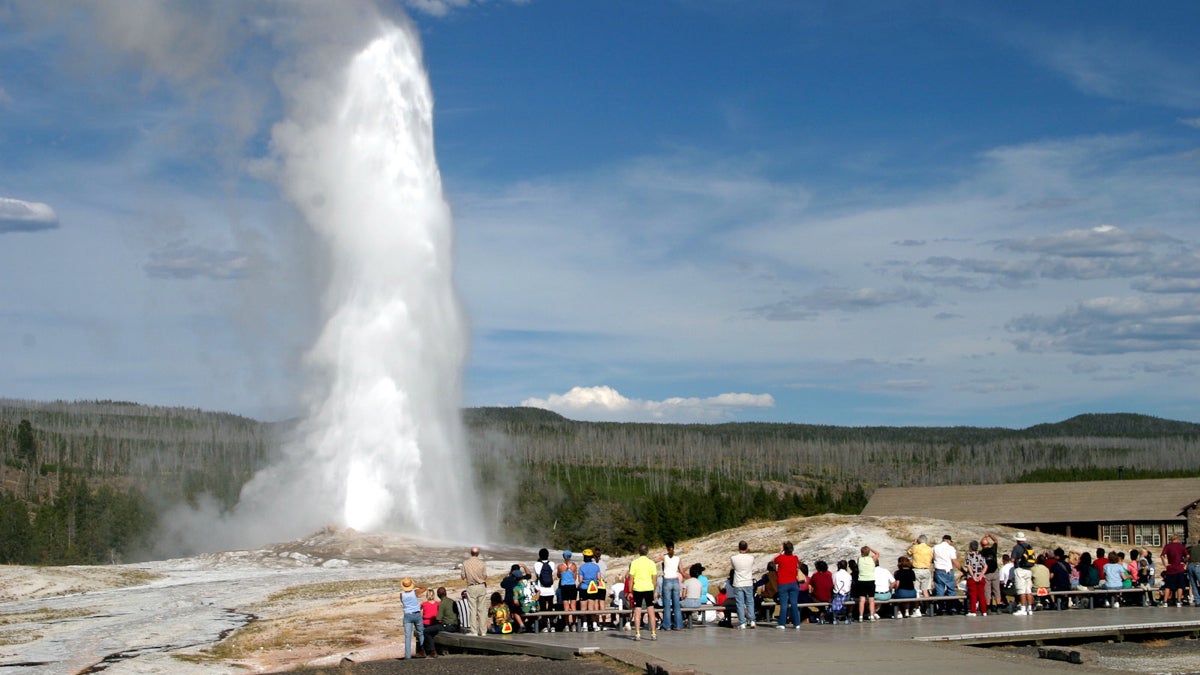How Old Faithful earned its name
 Photo via Wikimedia Commons)" title="Old_Faithful_(3679482556)" width="1" height="1"/>
Photo via Wikimedia Commons)" title="Old_Faithful_(3679482556)" width="1" height="1"/>
(Photo via Wikimedia Commons)
This week in 1870, the most famous of the geothermal landmarks received its name.
Today, Yellowstone National Park is known for its scenic mountain vistas and the many plant and animal species that call it home. But perhaps above all, it is noteworthy for the geysers and hot springs hinting at volcanic activity beneath its surface. This week in 1870, the most famous of these geothermal landmarks received its name.
Although well-traveled by local Blackfoot, Crow, and Shoshone tribes, systematic exploration of terrain surrounding the Yellowstone River only began following the establishment of the Montana Territory in 1864. A preliminary expedition in 1869 had hinted at the area’s beauty and inspired Montana’s surveyor-general Henry Washburn to organize a larger party to map the region. In August 1870, Washburn led a dozen men from the territorial capital in Helena south to Fort Ellis (near present day Boseman, MT), where they met up with a cavalry escort before heading south for the Yellowstone River.
During the weeks that followed, the Washburn expedition followed the course of the Yellowstone, occasionally breaking away from its banks to climb several of the nearby mountains. By the first week of September, they had crossed the river and moved toward Yellowstone Lake. Throughout their travels, they faced obstacles familiar to other explorers of the American West—harsh weather, unmarked trails, and the possibility of confrontations with the indigenous population.
They also encountered an unprecedented amount of volcanic activity. Nathaniel Langford, one of the first people recruited to join Washburn’s party, later recalled coming upon a glen filled with boiling springs “as diabolical in appearance as the witches’ caldron in Macbeth” which emitted foul-smelling sulfurous vapors. The surrounding ground sometimes cracked under the explorers’ weight, making efforts to collect specimens extremely precarious.
Yet for all the desolation associated with these springs, there were also moments of great beauty. On Sept. 18th, as the group started to make its way home from Yellowstone Lake, they saw a massive geyser spraying a column of water over 100 feet high. Further exploration revealed dozens more geysers, but this first one was special. “The beauty of the scene takes away one’s breath…” Gustavus Doane, the cavalry commander from Fort Ellis, wrote in his journal. “It is the most lovely inanimate object in existence.” Not only was the geyser beautiful, but its eruptions occurred with startling regularity–once every 60 to 65 minutes, leading Washburn to bestow its now famous nickname: “Old Faithful.”
Upon their return to Helena, several members of the Washburn expedition published accounts of their trip. Their descriptions of the wonders they had encountered—including Old Faithful—helped persuade Congress to establish Yellowstone as America’s first national park in 1872. A series of small earthquakes throughout the 20th century have caused Old Faithful to become a little less regular, with eruptions now occurring between 60 and 110 minutes apart. Nevertheless, it remains one of the park’s greatest natural treasures and enduringly popular attractions.
You can watch Old Faithful’s next eruption using the National Park Service’s streaming webcam.
Benjamin Gross is a science historian and research fellow at the Chemical Heritage Foundation. This post is part of his weekly web series for The Pulse, which takes us back in time to celebrate important moments in science history.
WHYY is your source for fact-based, in-depth journalism and information. As a nonprofit organization, we rely on financial support from readers like you. Please give today.



